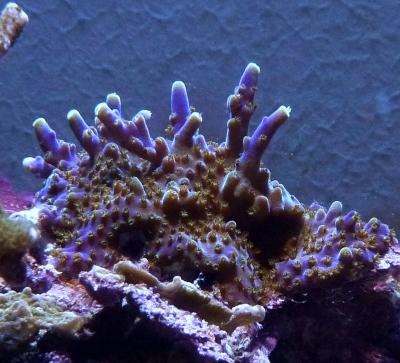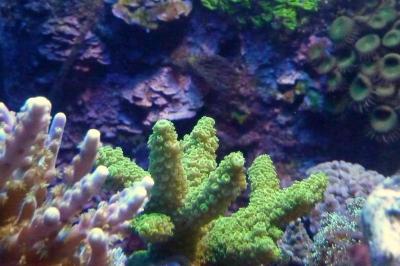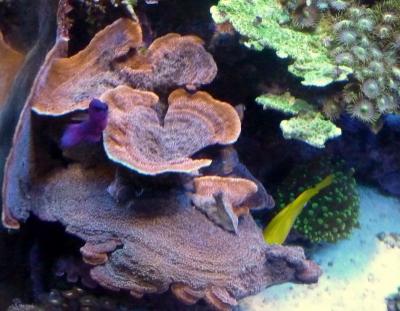 А я опроверг некоторую неверную информацию из того самого первого поста. А именно, что более частыми подменами НЕ ВЫЙДЕТ компенсировать потребление кальция-буфера. Т.е. подмены в любых количествах не помогут отказаться от КР-баллинга.
А я опроверг некоторую неверную информацию из того самого первого поста. А именно, что более частыми подменами НЕ ВЫЙДЕТ компенсировать потребление кальция-буфера. Т.е. подмены в любых количествах не помогут отказаться от КР-баллинга.
Про стрессы и т.д. - домыслы.
Ренди Холмс тоже считает что подмен будет недостаточно( в переводе гугла, вполне читаемо) : Water Changes to Add Something: Calcium and AlkalinityT
he above model investigates what happens with respect to maintaining something that is slowly depleted, such as magnesium. Some materials, however, such as calcium, alkalinity and
silica can be rapidly depleted. In these cases, normal water changes just cannot keep up with the depletion rate, as is shown in this section. Reef aquaria have a range of depletion rates for calcium and alkalinity. At the low end of reef aquarium demand, we might assume a daily depletion of 4 ppm of calcium and 0.2 meq/L (0.56 dKH) of alkalinity per day. That turns out to require the daily addition of about 0.5% of the tank's volume (1/2 gallon to 100 gallon tank) of saturated limewater to meet that demand.
Figures 21 and 22 show the drop in calcium and alkalinity, respectively, over a month when doing daily water changes amounting to 0% (no changes), 15% and 30% per month. It assumes that the saltwater being used has a calcium level of 420 ppm and an alkalinity of 4 meq/L. Neither water change rate has an appreciable impact on the calcium and alkalinity drop. In reality, the drop will eventually level-off as calcification is reduced and eventually stops as alkalinity and calcium get low enough, but especially in the first week of the model, it should approximate what happens, and it isn't pretty. Higher demand aquaria (with sometimes five times more demand or even higher in some reef aquaria) will deplete calcium and alkalinity even faster. Clearly, "normal" water changes cannot keep up.Some salt mixes contain excessive calcium. Using a salt mix with 550 ppm calcium will make water changes more effective at maintaining calcium above 380 ppm, but it still does not work out for "normal changes" to be able to maintain calcium levels in the long term. In a low demand model (4 ppm drop in calcium per day), changing 1% daily drops the calcium level to 380 ppm by day 56. Using regular batch "once a month" changes, the calcium level drops from 550 ppm at the start to 438 ppm just before the first water change (472 ppm after it). Then, 23 days later, before the next 30% water change, it has dropped below 380 ppm. Of course, at higher depletion rates the drop is even faster (it takes only nine days to fall below 380 ppm at a depletion rate of 20 ppm per day and changing 1% per day). Figure 21. Calcium concentration as a function of time when performing daily water changes equivalent to 0% (no changes), 15% and 30% of the total volume each month (in other words, 0%, 0.5% and 1% per day). In this example, calcium is present at 420 ppm at the start and is depleted at a low rate of 4 ppm per day.
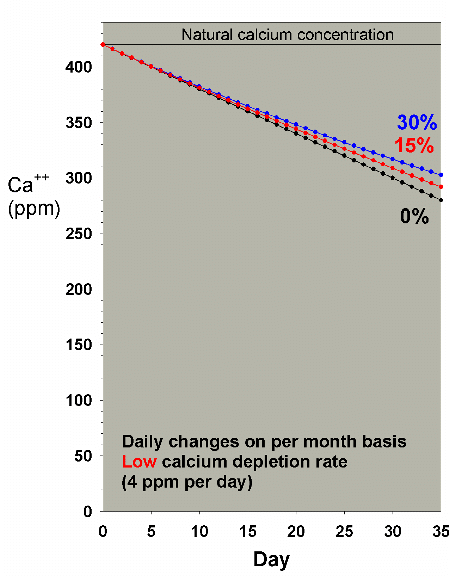
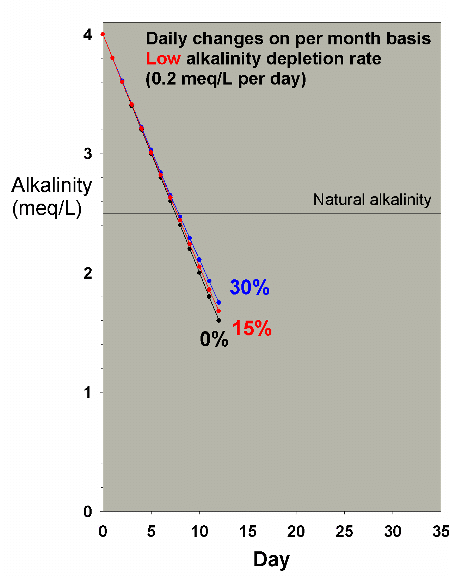
Figure 22. Alkalinity as a function of time when performing daily water changes equivalent to 0% (no changes), 15% and 30% of the total volume each month (in other words, 0%, 0.5% and 1% per day). In this example, alkalinity is present at 4 meq/L (11 dKH) at the start and is depleted at a low rate of 0.2 meq/L per day.
Very Large Water Changes Maintain Calcium and AlkalinityI
n the previous section I showed that normal water changes of up to 30% per month cannot maintain calcium and alkalinity in reef aquaria. But at some point, large enough water changes can do so. What volume of water change is necessary to maintain calcium and alkalinity in reef aquaria? In a tiny aquarium, 3 gallons for example, large daily water changes might be acceptable. How large is required? Figure 23 shows the drop in alkalinity for a low demand aquarium changing 0%, 5%, 10%, 15% and 30% of the water EVERY DAY. In that case, it appears to require between 10% and 30% of the total water volume to be changed every day to maintain suitable alkalinity. Figure 24 shows similar data for a higher demand aquarium (1 meq/L alkalinity per day). In this case, it takes close to a 50% water change each day to maintain suitable alkalinity. Similar data are obtained for calcium (not shown), where 30% and 50% daily water changes in a high demand aquarium (24 ppm calcium per day) stabilize at 364 and 396 ppm calcium, respectively. So, while changing 50% per day is really out of the question for any normal to large reef aquarium without an inlet directly from the ocean or a large seawater well, a 3-gallon nanoreef aquarium attached to a very slow continuous pump could maintain adequate calcium and alkalinity by replacing 1.5 gallons each day. Figure 23. Alkalinity as a function of time when performing very large daily water changes of 0% (no changes), 5%, 10%, 15% and 30% of the total volume EACH DAY. In this example, alkalinity is present at 4 meq/L (11 dKH) at the start and is depleted at a low rate of 0.2 meq/L per day.
<a href=""%20style="font-family: Georgia, 'Times New Roman', Times, serif; font-size: 12pt; color: rgb(0, 102, 153); text-decoration: initial; font-weight: bold;">
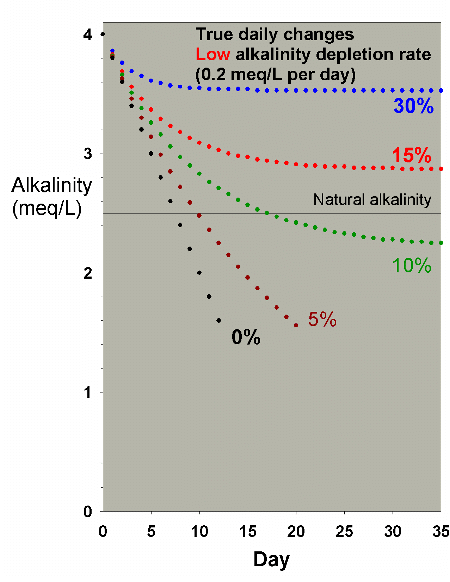
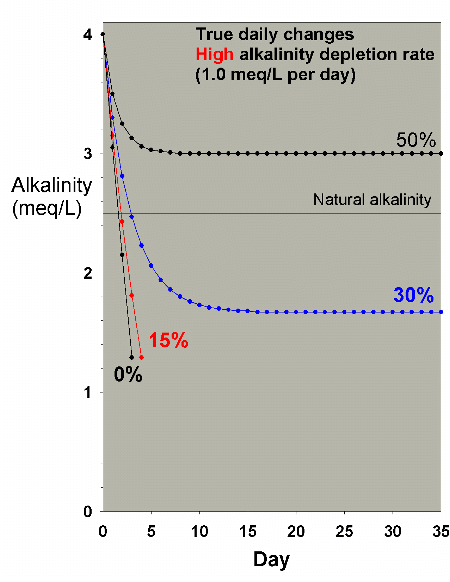
Figure 24. Alkalinity as a function of time when performing very large daily water changes of 0% (no changes), 15%, 30% and 50% of the total volume EACH DAY. In this example, alkalinity is present at 4 meq/L (11 dKH) at the start and is depleted at a moderately high rate of 1 meq/L per day.















